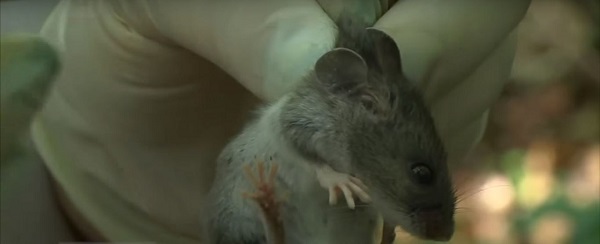Mice may look harmless since they are so cute physically. The looks should never deceive you. This is because
mice do carry pests and diseases that can be spread to humans and other animals. The transmission can happen
through ticks, mites, lice, fleas, droppings, and even biting. The most common diseases that are carried by
mice include plague, rat bite fever, leptospirosis, Hantavirus and salmonella.
 Hantavirus and salmonella
Hantavirus and salmonella
These two diseases are in the same category since they are spread through mice droppings. This is usually after food
has been contaminated by the feces. Hantavirus can also be transmitted when one breathes in dust that has mice feces
and through bite wounds. The symptoms associated with the illness include respiratory distress that can be very severe,
renal failure, and aches and pains that are very similar to those of the flu. The symptoms of salmonella include diarrhea,
vomiting and gastrointestinal pain.
Rat bite fever and leptospirosis
Leptospirosis is spread mainly through the urine of mice. These bacteria can remain within soil and water for many months. The
symptoms associated with these bacteria include jaundice, diarrhea, vomiting, muscle aches, headaches and high fever.
As for rat bite fever, it can be carried by either rats or mice. This disease is spread through scratches and bites. Other modes
of transmission include the handling of rodents that are already infected or the consumption of food and water that has been infected.
The symptoms of rat bite fever include a red rash that has small bumps, vomiting, body aches and fever.
Plague
This is a disease that occurs as a result of bacteria. Transmission happens through flea bites. When fleas feed on a rodent that has been
infected, they can transmit the bacteria. One may also get infected if they handle a mouse that is already infected.
Plague comes in three kinds: pneumonic, septicemic and bubonic. The initial stages of the three types start with general weakness and very
high fevers. The symptoms of bubonic fever include painful lymph nodes which can also be swollen. Septicemic plague is evidenced by bleeding
in organs and skin, shock and abdominal pain. Respiratory shock and failure is one of the characteristics of pneumonic plague. This last one
can actually be transmitted from human to human.
Spread of the diseases
The only two ways in which diseases can be transmitted from mice to humans is either directly or indirectly. In the direct transmission mode, humans
who handle or consume food when it has already been contaminated by the mice feces get infected. In some cases, humans can also consume water that has
a dead mouse within.
Direct transmission can also happen when one has a wound on the skin and then comes into contact with the urine of a mouse that is already infected.
Handling sick mice is yet another mode through which parasites and diseases can be transmitted. Indirect transmission is through instances such as
bites from parasites such as mosquitoes, fleas and mites after they have fed on a mouse that has been infected. All infections should be treated
promptly as soon as they are detected.
Go back to the
How to get rid of mice in the attic home page. You might also want to read about
how to kill mice and why the use
of snap traps is better than
mouse poison. Read an analysis of the different types of traps and how to use them on the
how to trap mice page.
Learn why
bait is not as important as trap type, placement and location. Also read a full analysis of
mouse repellent to understand why it
never works. If you see droppings and want to identify them, read the
mouse poop page. If you need to hire professional help, read about
how much does mouse removal cost?
or you can read this site to learn how to do it yourself. Feel free to email me about What diseases do mice carry?